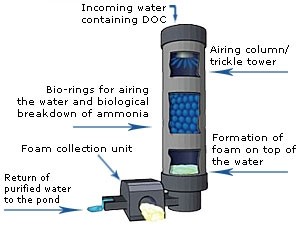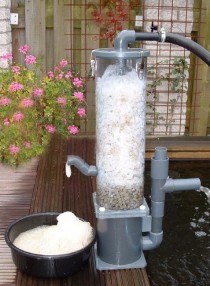show your overstocked tanks.....
- Thread starter midnight
- Start date
You are using an out of date browser. It may not display this or other websites correctly.
You should upgrade or use an alternative browser.
You should upgrade or use an alternative browser.
I see. Thanks, John. The reason for my asking is I always wonder how long would a tank like this last.I just moved them in that tank about a month ago.
I am talking merely volume of fish over volume of water. Just shooting in the dark, this is about 10x-100x more than the 1 cubic inch of fish per gallon rule of thumb. I know this is doable short term with a tremendous water turnover and a very large sump but over long term... that's what I wonder.
Cuz in some of my tanks too I run over 1 cu inch over gallon and while my sumps are 2x-5x bigger than the volume of my tanks, I wonder what's the turnover to shoot for so the fish thrive, not survive. Naively and crudely thinking, I'd think the turnover should be a few minutes, that is say at 2 min the incoming water should be 30 x the tank volume in one hour.
So in your case, I'd probably be ok to experiment like this with a 1200 gal sump attached to your 600 gal tank and 30 x 600 = 18,000 GPH, which however would blow all these fish around like in a hurricane... Just looking to learn, mate, if you will to share your expertise.
Perhaps one could get away with a 4 min turnover and 9,000 GPH which is still very strong flow in a 600 gal but a lot more manageable by the fish.
I wonder what Phil would tell us
In aquaculture, water turbidity from inorganics is fine and, in cases, promoted for keeping fish calm in 'natural'-state water. Inorganics, such as clays, are inert to the bio-load. However, if the turbidity is derived from organics, the risk of nitrite toxicity increases and leads, invariably, to conditions promoting Methemoglobinemia (brown blood disease).
To remove organics from an overtaxed system, I recommend incorporating a foam fractionator (FW protein skimmer). These have proven to work wonders in aquaculture applications where high bio-densities are maintained.

There's the Clarity line of FW skimmers available and there are tons of DIY articles/videos available on the 'net for building your own.

To remove organics from an overtaxed system, I recommend incorporating a foam fractionator (FW protein skimmer). These have proven to work wonders in aquaculture applications where high bio-densities are maintained.

There's the Clarity line of FW skimmers available and there are tons of DIY articles/videos available on the 'net for building your own.

Would you be able to track the organic matter with a TDS (conductivity) pen? I assume you would but not sure if it would have to be weighed like tannins.
Would you be able to track the organic matter with a TDS (conductivity) pen? I assume you would but not sure if it would have to be weighed like tannins.
There are turbidity meters available. However, they're cost prohibitive at about $1,000 for a base model. And, they don't differentiate between organic and inorganic matter. They test by light absorption. Lab counter units can measure between organic and inorganic turbidity. Of course, their costs are greater than the hand-held/field units.
There are turbidity meters available. However, they're cost prohibitive at about $1,000 for a base model. And, they don't differentiate between organic and inorganic matter. They test by light absorption. Lab counter units can measure between organic and inorganic turbidity. Of course, their costs are greater than the hand-held/field units.
You would be able to test the conductivity of tap vs tank water and get an idea of how much more organic matter would be in the water though. I'm thinking that for a practical approach, if turbidity would be able to be assessed and controlled through water changes with a $10 tds pen. I assume state water has regulations about turbidity but I'm not sure in what requirements have to be met. I just wasn't sure if the conductivity would be a realistic approach. The idea has been thrown around to monitor when you should water change to keep acceptable nitrates and stuff, but I'm confident that stuff shows up on the pen.
Many thank you's, Phil. So you feel just large enough sump and turnover (and of course water change; I run 100% in 3 days continuous WC) would not be enough and a skimmer would be needed on top of them?In aquaculture, water turbidity from inorganics is fine and, in cases, promoted for keeping fish calm in 'natural'-state water. Inorganics, such as clays, are inert to the bio-load. However, if the turbidity is derived from organics, the risk of nitrite toxicity increases and leads, invariably, to conditions promoting Methemoglobinemia (brown blood disease).
To remove organics from an overtaxed system, I recommend incorporating a foam fractionator (FW protein skimmer). These have proven to work wonders in aquaculture applications where high bio-densities are maintained.
View attachment 1254175
There's the Clarity line of FW skimmers available and there are tons of DIY articles/videos available on the 'net for building your own.
View attachment 1254179
I don't quite get the link between the organic particulate and nitrite (and ammonia?). If that particulate is still rotting, then yes, no question and it is obvious. But if that particulate is the end product of the biochemicals reactions of the decomposition, like say clumps or conglomerates of fine fiber, or keratin-derived compounds or many other benign biochemical polymers etc. that contain no ammonious nitrogen that'd still need to be converted or no nitrogen at all, then there should be no link between such particulate and fish health, at least based on the nitrogen cycle. No?
You would be able to test the conductivity of tap vs tank water and get an idea of how much more organic matter would be in the water though...
I think your tank water contains not only dissolved organic compounds extraneous to the tap water but also inorganic, so a simple reference to the tap water might not mean much.
Moreover, the mobility of large organic ions through the water can be orders of magnitude different from small inorganic ions, which make up the current which is being measured by the TDS. It is not a straightforward analysis, AFAIK. I mean a small organic molecule like an anion of the muriatic acid can move rather quickly, but a large one like an anion of a fatty acid will move slowly and even affect overall dielectric properties of surrounding water because of its very large and long hydrophobic molecular structure.
Besides, it appears we are mixing two unmixable things - dissolved chemicals and suspended microscopic particles which are not dissolved and cannot be registered by a TDS meter because they bear no effect on water conductivity.


